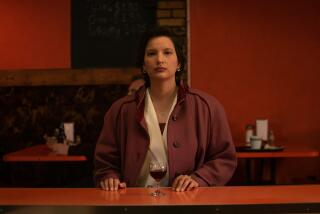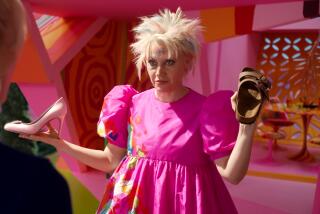A Forgotten Lamb and a Lost Childhood
âItâs amazing he still works,â my 18-year-old daughter said, standing on a stepladder as a few notes creaked out of Little Lamb. She was taking him from the top shelf of her closet as we culled playthings of earlier days. A beloved toy that was once fluffy and yellow was now threadbare, in shades of mottled gray mixed with dirty cream.
Allissa wound the chrome ring on the stuffed animalâs left side, and out came a halting rendition of âMary Had a Little Lamb,â from a creature as stiff and slow as a rusted flour sifter.
His face was sad and sunken; his black-marble eyes bulged. We listened in silence as his head moved awkwardly to the music. It pained me to remember that his fleece had seen better days.
Allissa and Little Lamb had entered our world simultaneously. She came home in a pink receiving blanket; he was nestled in tissue paper, inside a white box, under stiff ribbon. Among an avalanche of gifts--clothing, baby gear and silver spoons--Little Lamb was the only toy.
But when I saw him, I knew for the first time that I was really a mother. Pregnancy had failed to convince me and when labor gave way to seven pounds of life, it seemed unexpected. Holding my daughter, so delicate and new, terrified me. But the nurses took charge those first few days. And I glimpsed a tiny stranger between feedings.
No, motherhood didnât become a reality until Little Lamb entered our lives. He verified that a baby was in the house, because only people with babies surround themselves with stuffed animals playing lullabies.
I kept him on the night table next to my bed. He was perky and held his head high; I turned his chrome ring and watched his downy body bob and sway to the music. He was a pleasant reminder of wonderful changes.
After several days, I moved Little Lamb to Allissaâs crib, where he remained untouched for months by a baby too young for playing. But when Iâd wind him up and sheâd hear his first notes, she would always smile.
Eventually she reached for him. Sometimes sheâd cuddle and caress, rubbing his softness to her cheek. But she would also grab him with glee and squeeze hard. She sucked his fur and chewed his tail. His ears were pulled; his eyes invaded by curious fingers. Sheâd stand by the rail of her crib and drop him on the floor. Several times Little Lamb was doused with apple juice, leaving him forever matted.
He endured all these atrocities and more. Allissa dragged him everywhere. She went to sleep each night listening to his lullaby as he lay under her arm.
Eventually other toys arrived, offering fresh adventures. Painted blocks and hobby horses. Dolls that talked, and supermarket carts bearing plastic vegetables, meat and eggs.
Yet Little Lamb remained her favorite. At first, emerging friendships could not surpass him. Even nursery school did not entirely divert Allissaâs attention from her stuffed companion.
But toddlerhood gave way to roller skates, television, school, best friends, movies, camp, slumber parties and adolescence. Little Lamb got lost in lifeâs shuffle.
He was left to gather dust and turn gray in his twilight years . . . until we came across him in his lonely vigil on the top shelf of Allissaâs closet.
Amid a pile of discarded games and books, Allissa held her old friend. She looked him over carefully, running her fingertips across his face and along his back.
âHeâs part of my life,â she said. âI canât get rid of him.â
I picked him up, flooded with memories of gentle times now far out of reach: lace bonnets, nursery rhymes and rocking-chair nights. I remembered my grandmotherâs words the day Allissa was born: âThe time between now and when she leaves for college will feel as if you walked through a doorway.â
She was right.
The little girl of yesterday had grown up; her childhood gone by. And a stage of my life had passed with it. But, like my daughter, I wasnât ready to let go.
More to Read
Eat your way across L.A.
Get our weekly Tasting Notes newsletter for reviews, news and more.
You may occasionally receive promotional content from the Los Angeles Times.










